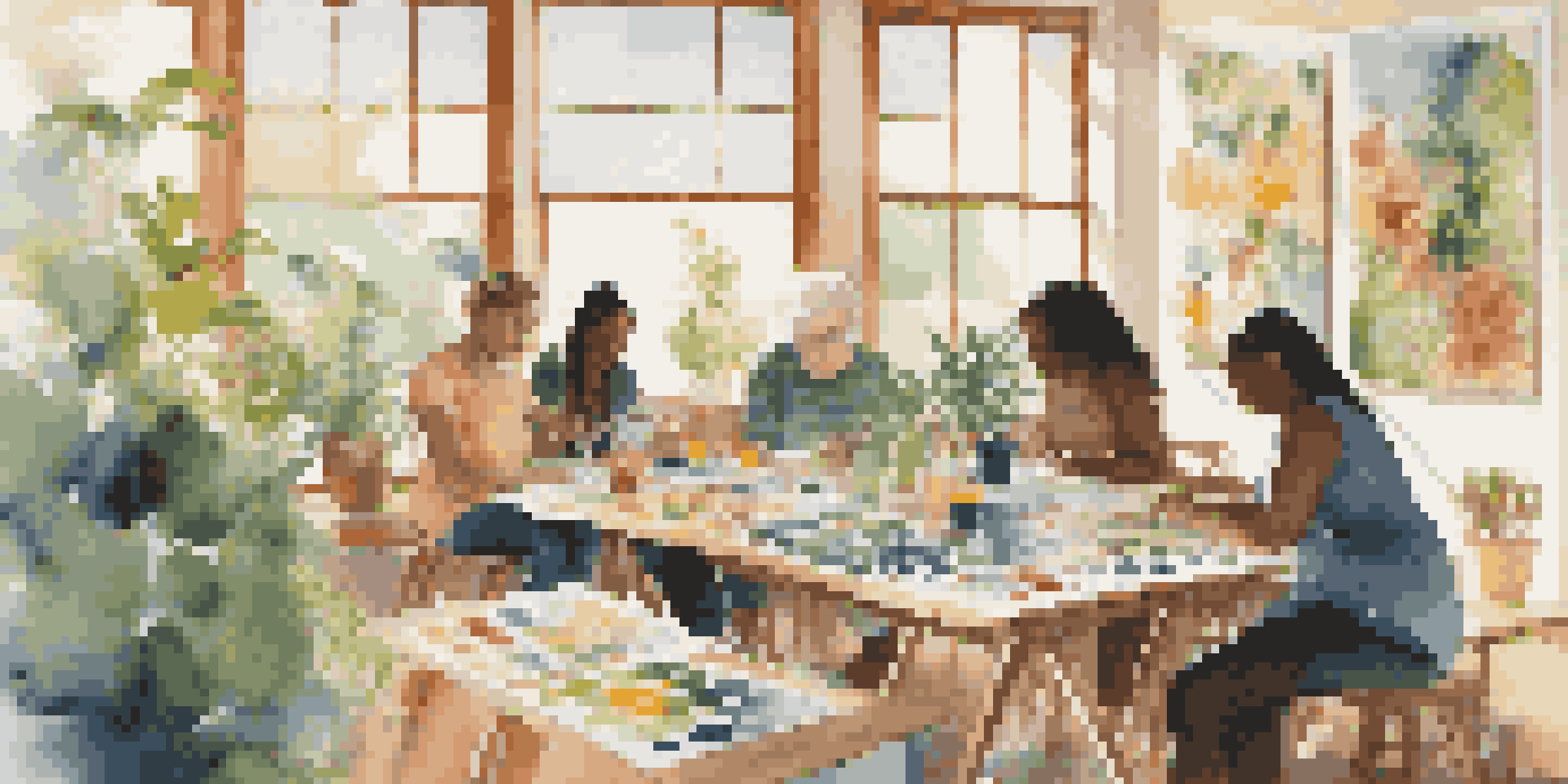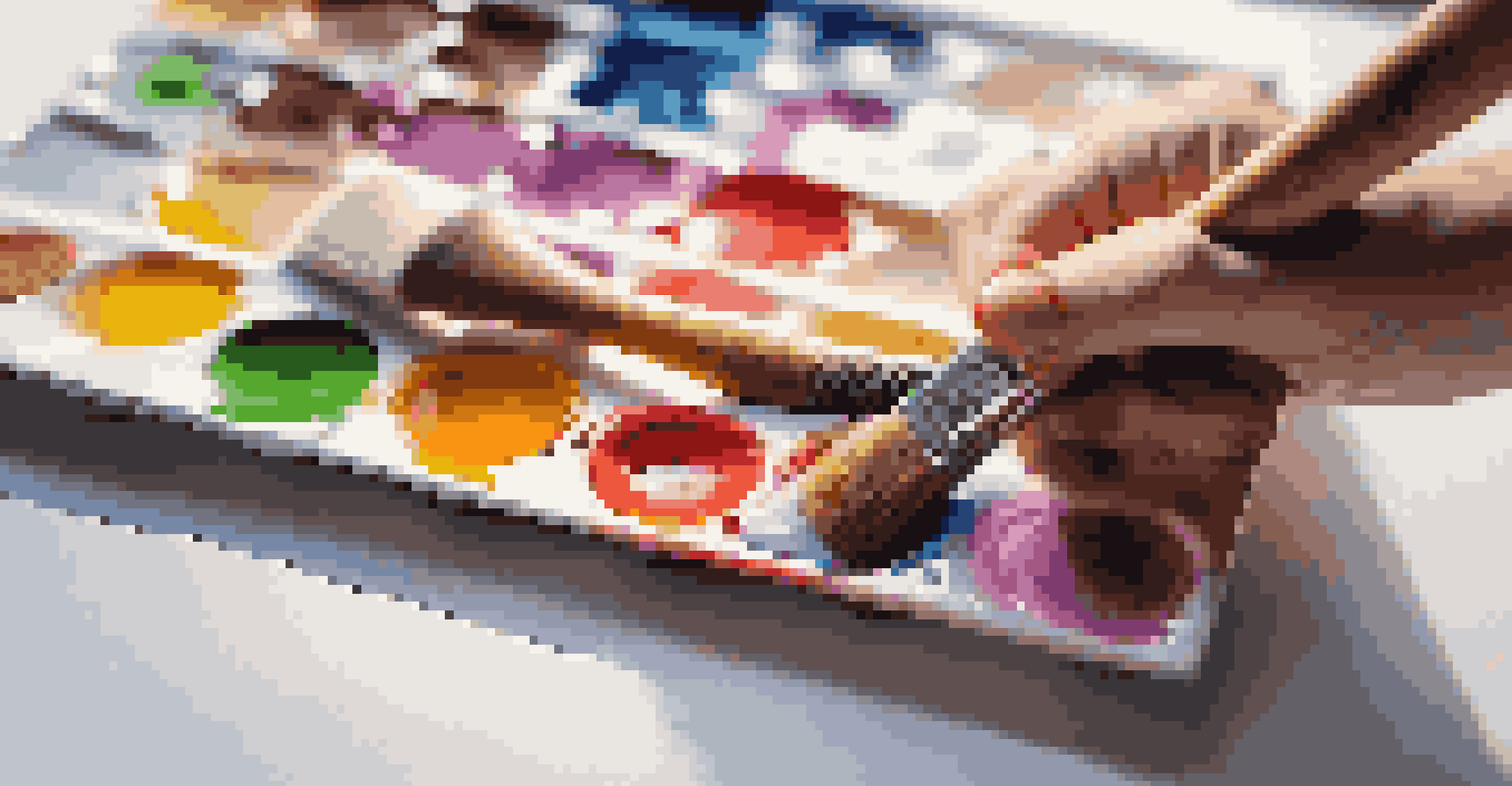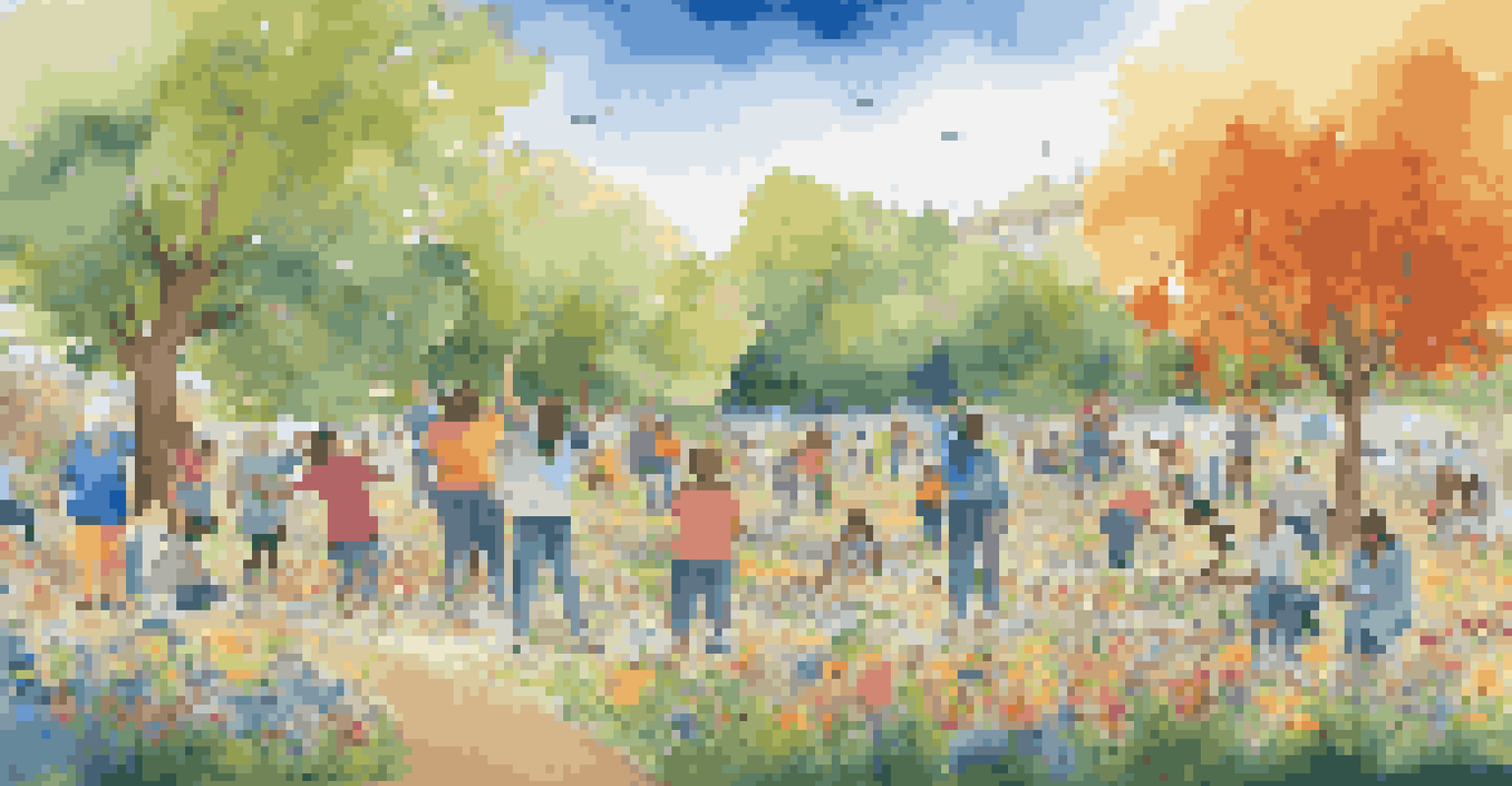Art as a Healing Journey: Personal Narratives and Insights

Understanding the Connection Between Art and Healing
Art has long been recognized as a medium for expression and communication, but its role in healing is often overlooked. Engaging in creative activities can provide a therapeutic outlet for emotions, allowing individuals to process experiences that might be difficult to articulate. Whether through painting, music, or writing, art enables a dialogue with the self, fostering deeper introspection and understanding.
Art is the most beautiful of all lies.
Research shows that the creative process can reduce stress and anxiety levels, leading to improved mental health. For example, studies indicate that art therapy can significantly enhance emotional resilience in those facing trauma. This connection between art and healing opens doors to innovative therapeutic practices that encourage individuals to explore their feelings through creativity.
Many personal narratives highlight the transformative power of art. Individuals who have faced challenges, such as illness or loss, often share how engaging in creative endeavors helped them navigate their emotions and find solace. These stories serve as a testament to art's profound capacity to heal and restore.
Personal Narratives: Stories of Transformation
Personal stories reveal the deep impact art can have on healing journeys. For instance, an individual recovering from a significant life event might take up painting, using colors and shapes to express feelings they can't verbalize. Through this creative process, they often find clarity and relief, turning pain into beauty.

Consider a musician who faced depression. By composing music, they created a soundtrack for their struggle, allowing them to confront their emotions head-on. This transformation not only offered an outlet but also connected them with others who resonated with their experiences, fostering a sense of community through shared struggles.
Art as a Healing Medium
Engaging in creative activities allows individuals to process emotions and experiences that are often hard to articulate.
These narratives underscore that healing is not a linear process. Instead, it’s filled with ups and downs, much like creating a piece of art. Each brush stroke or note played can symbolize a step forward, illustrating the journey towards healing and self-discovery.
Art Therapy: A Structured Approach to Healing
Art therapy is a structured form of therapy that uses creativity to promote mental well-being. Licensed therapists guide individuals through artistic processes, helping them explore their emotions in a safe and supportive environment. This therapeutic approach combines traditional talk therapy with creative expression, making it particularly effective for those who struggle with verbal communication.
Creativity takes courage.
During art therapy sessions, participants might engage in various artistic activities, from drawing to collage-making. These activities facilitate exploration of feelings and experiences, often leading to breakthroughs in understanding. For instance, someone dealing with grief might create a visual representation of their loss, providing a tangible focus for their emotions.
The beauty of art therapy lies in its accessibility. Individuals of all ages and skill levels can participate, making it a versatile option for many. By integrating art into the healing process, people can unlock new pathways to understanding themselves and their experiences.
The Role of Community in Art as Healing
Community plays a vital role in the healing power of art. Group activities, such as community art projects or workshops, foster connections among participants, creating a sense of belonging. This communal aspect can amplify the healing experience, as individuals share their stories and support one another through their creative journeys.
In many communities, art initiatives have emerged as safe spaces for individuals to express themselves. For example, community murals can serve as a collective canvas for healing, allowing participants to contribute their personal stories while beautifying their surroundings. This collaboration not only enhances individual healing but also strengthens community bonds.
Community Enhances Healing
Group art initiatives foster connections and support among participants, amplifying the healing experience through shared stories.
Furthermore, sharing art within a community can validate individual experiences. When people see their feelings reflected in others' work, it reinforces the notion that they are not alone in their struggles. This shared understanding creates a nurturing environment that encourages ongoing healing and growth.
Exploring Different Forms of Artistic Expression
Art comes in many forms, each offering unique avenues for healing. Visual arts like painting and sculpture allow for tangible expressions of emotion, while performing arts such as dance and theater provide physical outlets for feelings. Writing, whether through poetry or journaling, can serve as a powerful tool for self-reflection and catharsis.
Each artistic medium has its own therapeutic benefits. For example, dance can be a liberating form of expression, helping individuals release pent-up emotions through movement. Similarly, writing can provide a safe space for processing thoughts and experiences, often leading to newfound insights and clarity.
The key is to find a form of art that resonates personally. By experimenting with different mediums, individuals can discover which artistic outlets best support their healing journey, making the process even more meaningful and impactful.
Mindfulness and Art: A Powerful Duo
Incorporating mindfulness into the artistic process can significantly enhance its healing potential. Mindfulness encourages individuals to remain present, fostering a deeper connection to their emotions and the creative process. This combination allows for a more profound exploration of feelings, leading to enhanced self-awareness and healing.
When individuals practice mindfulness while creating art, they often experience a sense of flow, where time seems to stand still. This state of immersion can provide a much-needed escape from everyday stressors, allowing for a refreshing pause that promotes emotional balance. For instance, focusing on the brush strokes or the rhythm of music can ground individuals in the moment, fostering a meditative experience.
Mindfulness Boosts Artistic Expression
Incorporating mindfulness into the creative process enhances self-awareness and emotional balance, making art a powerful tool for healing.
Moreover, the practice of mindfulness can help individuals approach their creative work without judgment. This non-critical mindset encourages exploration and experimentation, allowing for a richer and more authentic artistic expression that supports healing.
The Future of Art in Healing Practices
As we continue to understand the profound impact of art on healing, the future holds exciting possibilities. Increased recognition of art therapy and creative practices in mental health treatment is paving the way for more inclusive and holistic approaches to well-being. This shift encourages a broader acceptance of art as a legitimate therapeutic tool.
With advancements in technology, new art forms are emerging that blend creativity with digital platforms. Virtual reality art experiences, for instance, offer innovative avenues for expression and healing, making art more accessible to individuals who might not engage in traditional artistic practices. This evolution can expand the reach of artistic healing to diverse populations.

Ultimately, the integration of art into healing practices encourages individuals to embrace their creativity as a source of strength. By valuing personal narratives and artistic expression, we can create a more compassionate approach to mental health that honors the uniqueness of each individual's journey.